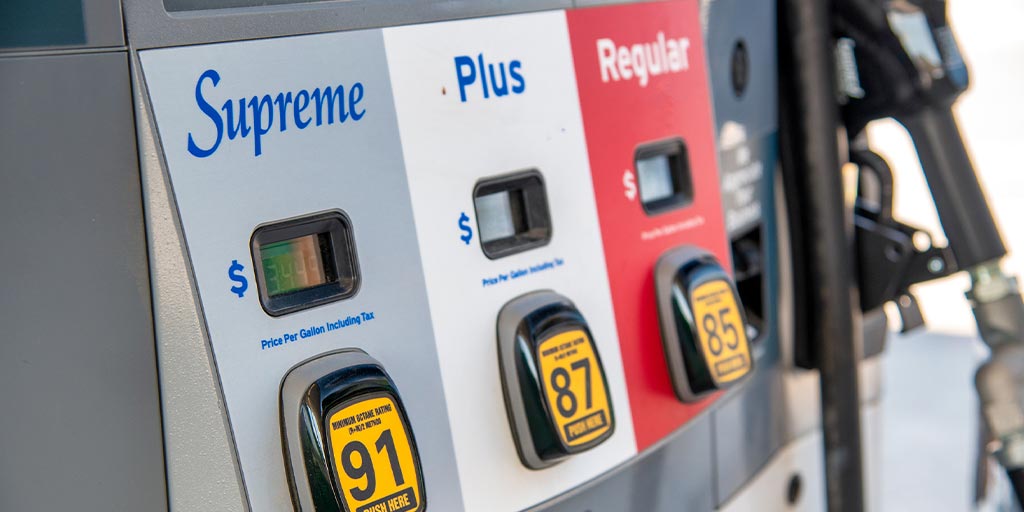I cringed yesterday when my low fuel light went on. It meant that I could no longer delay facing the increased prices at the gas pump. To fill my family sedan with regular unleaded at the local Chevron station the bill rang up at $84.12! WOW. $6 a gallon.
The Russian conflict has made headlines for many reasons including the rise of fuel prices. Last year the US imported nearly 700,000 barrels per day of crude oil and refined products from Russia. Earlier this month imports of these products were banned. Demand remains. But the impact of the conflict for consumers goes beyond oil.
Remember my husband the music store owner? He told me last week that his suppliers for amplifier tubes are predominately Russian companies. He says he can now sell a really great amp, but you can’t use it without the tube. Turns out it’s not just him, most guitar amplifiers use vacuum tubes from Russia. It got me thinking that there must be other not-so-obvious supply chain implications too, so I set out to investigate.
In 2021 the US imported $29.7 Billion worth of goods from Russia. These imported goods include Oil, energy products, fertilizers, metals and other industrial materials.
Thinking of having your kitchen remodeled? If so, prices might be poised to climb event higher since Russia supplies roughly 10% of the hardwood plywood in the US. Russian imports have been growing in this sector over recent years. No wood is moving now.
Texas fiber-optic cable makers Incab relies on their Russian parent company for critical components. They are not alone. Other companies that manufacture goods in the US but reply on Russian materials are facing challenges too. Finding replacement parts in an environment where the supply chain is already tight is an even more daunting task. Companies are forced to get creative to replace supplies or modify designs, reinvest themselves a little to stay alive and find a way without Russian supply imports. These adjustments generally cost time as well as money.
Ukrainian exporters are having a tough go too. Did you know that Ukraine supplies about 50% of the world’s neon gas which is used to produce semiconductor chips? Corporations and governments are scrambling to locate alternative supplies. European car makers are facing issues due to shortages of wires made in Ukraine and other logistical issues due to the conflict.
With higher prices in many areas, consumers are being more intentional with where and how they spend. One area that consumer dollars have been flocking to is travel. As we enter Spring and look forward to school break, we see travel spending on the rise. This is especially prevalent in US domestic travel as Covid restrictions have eased and Omicron has subsided. Hotel foot traffic in the US jumped sharply from February through March as travelers take to the roads and sky once again. Warm weather and Spring Break will fill theme parks through mid-April and traffic trackers at parks are predicting long lines due to large crowds.
Business travel is starting to come back to life too. Conferences and meetings are shifting back to in-person and that means big dollars for airlines and hotels and conference center areas. A recent survey found that 75% of business travelers anticipate more travel in 2022 than the prior year. The recovery here will take time, and the US Travel Association does not anticipate business travel to reach pre-pandemic levels until 2024. Business travel is of special interest to airlines as business travelers tend to spend more on airfares and seat class upgrades.
Looking toward Summer, travelers are expected to travel significantly more in 2022 than they did in 2021 and splurge with bigger and longer trips planned – well beyond the National Parks and road trips of the past two years. Travel company Expedia’s CEO recently went on record saying that Summer 2022 will be the “busiest season ever.” Pent-up demand is huge and after two years of Covid, many have accrued a healthy number of vacation days. Even with increased airline prices, it is expected that demand is so great that consumers will be willing to pay higher prices to get back traveling – especially since they have not spent much on travel in the past few years.
Each of us is a consumer, spending in our own unique ways. We are all dealing with inflation and increased prices have impacted us all, at the pump, airline tickets and for musicians’ guitar amps too. Wherever you are spending your consumer dollars this season, keep intentional how you do so.
Meredith Rosen






